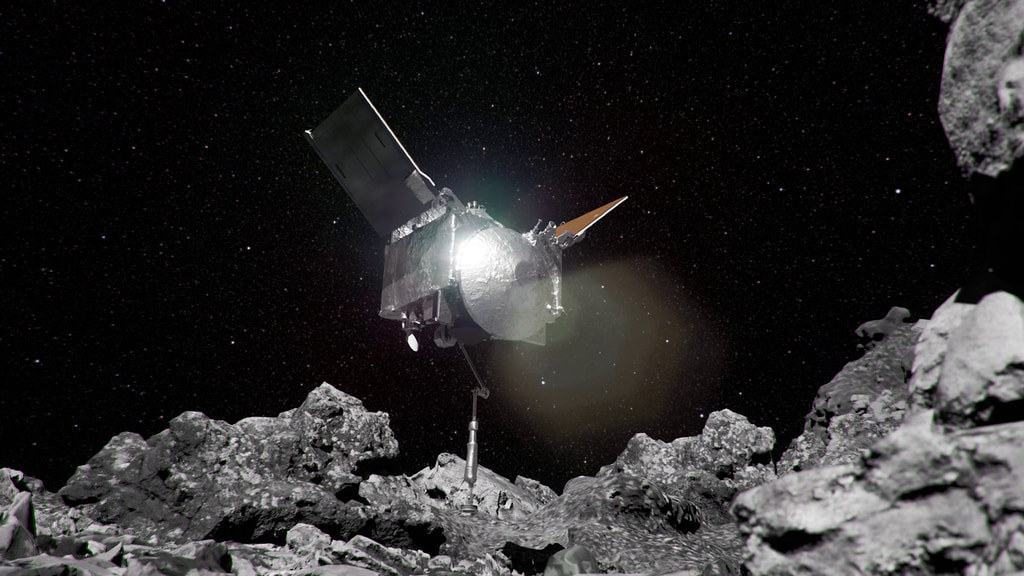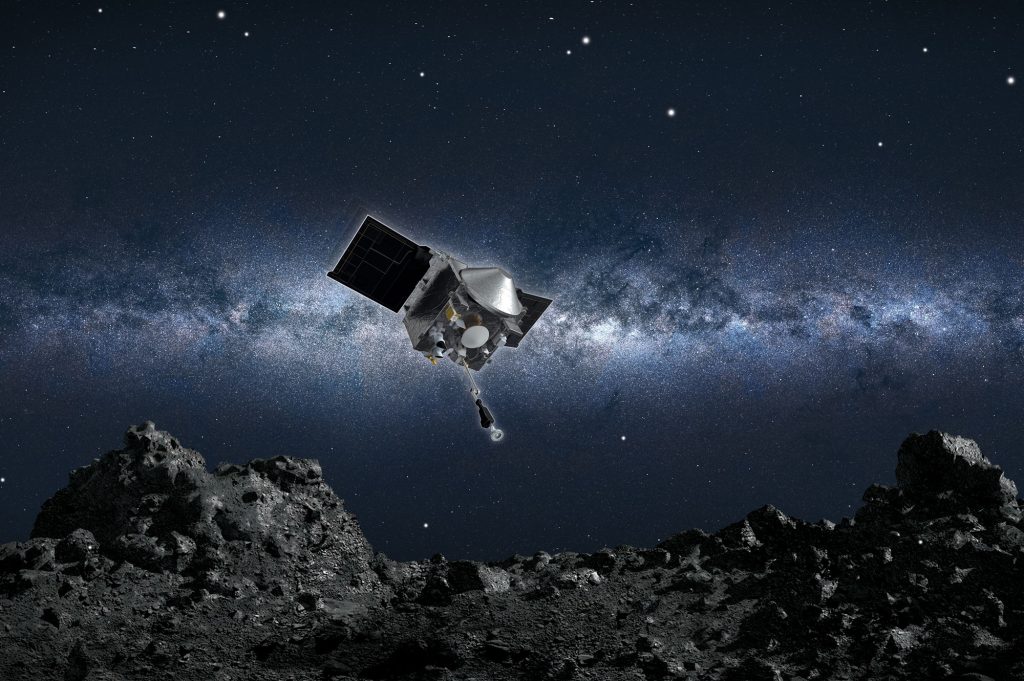NASA OSIRIS-REx: Unveiling the Monumental Space Odyssey.
NASA’s OSIRIS-REx mission is one of the most ambitious and exciting space missions of our time. Launched in 2016, OSIRIS-REx traveled to the asteroid Bennu, collected a sample of its surface material, and returned to Earth in 2023. The OSIRIS-REx mission is the first U.S. mission to return a sample of an asteroid to Earth, and it is providing scientists with an unprecedented opportunity to study the early solar system, the formation of planets, and the potential for life beyond Earth.
What is NASA OSIRIS-REx?
NASA OSIRIS-REx stands for Origins, Spectral Interpretation, Resource Identification, Security-Regolith Explorer. It is a spacecraft that is equipped with a variety of scientific instruments, including cameras, spectrometers, and a sample collection arm.
What is the purpose of the OSIRIS-REx mission?
The purpose of the NASA OSIRIS-REx mission is to collect a sample of an asteroid and return it to Earth for study. Scientists are interested in studying asteroids because they are thought to be remnants of the early solar system. By studying asteroids, scientists can learn more about how the solar system formed and how planets evolved.
Where is OSIRIS-REx now?
As of October 5, 2023, NASA’s OSIRIS-REx spacecraft is in a heliocentric orbit, meaning that it is orbiting the Sun. It is currently located between the orbits of Earth and Mars. OSIRIS-REx will continue to orbit the Sun until it is ready to begin its next mission.
Is OSIRIS-REx back on Earth?
Yes, OSIRIS-REx returned to Earth on September 24, 2023, after a successful mission to collect a sample of the asteroid Bennu. The spacecraft released a capsule containing the Bennu samples over Earth’s atmosphere, and the capsule parachuted to the Department of Defense’s Utah Test and Training Range. The OSIRIS-REx team retrieved the capsule and transported it to a secure facility for analysis.
Has OSIRIS-REx landed?
No, OSIRIS-REx itself did not land on Earth. It released the capsule containing the Bennu samples over Earth’s atmosphere, and the capsule parachuted to the ground. The OSIRIS-REx spacecraft itself continued on its journey, and it is now in a heliocentric orbit. OSIRIS-REx may be used for future missions, but it is not currently scheduled to land on Earth.
Did OSIRIS-REx succeed?
Yes, OSIRIS-REx succeeded in its mission to collect a sample of an asteroid and return it to Earth. The spacecraft collected a 60-gram sample of Bennu’s surface material in 2020, and it returned the sample to Earth in 2023. The OSIRIS-REx mission is the first U.S. mission to return a sample of an asteroid to Earth, and it is providing scientists with an unprecedented opportunity to study the early solar system and the potential for life beyond Earth.
What kind of samples did OSIRIS-REx collect from Bennu?
NASA OSIRIS-REx collected a sample of Bennu’s surface material, including rocks, dust, and pebbles. The sample weighs about 60 grams, which is about the size of a handful of sand.
What are scientists studying in the OSIRIS-REx samples?
Scientists are studying the NASA OSIRIS-REx samples for a variety of things, including:
- The composition of the asteroid
- The age of the asteroid
- The presence of organic molecules
- The potential for life
What have we learned about Bennu so far from the OSIRIS-REx mission?
So far, the NASA OSIRIS-REx mission has revealed that Bennu is a very old asteroid that is likely billions of years old. Scientists have also found that Bennu is covered in rocks and boulders, and that it has a very porous surface.
What does the OSIRIS-REx mission mean for our understanding of the early solar system and the potential for life beyond Earth?
The NASA OSIRIS-REx mission is providing scientists with an unprecedented opportunity to study the early solar system and the potential for life beyond Earth. By studying the NASA OSIRIS-REx samples, scientists can learn more about how the solar system formed, how planets evolved, and whether or not life could have arisen on asteroids.
NASA OSIRIS-REx and Other Missions Tracking Three Potentially Hazardous Asteroids

NASA OSIRIS-REx has not yet discovered any asteroids that pose a threat to Earth. The OSIRIS-REx mission is focused on studying the asteroid Bennu, and it has not yet been tasked with surveying the asteroid population for potential threats.
However, NASA does have other programs that are dedicated to identifying and tracking near-Earth asteroids (NEAs). These programs, such as the Near-Earth Object Observations Program (NEOO) and the Planetary Defense Coordination Office (PDCO), have identified over 25,000 NEAs, and they are constantly discovering new ones.
Of these 25,000 NEAs, only about 2,000 are classified as potentially hazardous asteroids (PHAs). PHAs are asteroids that are large enough and close enough to Earth to pose a significant threat if they were to impact.
NASA is currently tracking all of the known PHAs, and it is working on developing technologies to deflect any PHAs that may be on a collision course with Earth.
Here are three examples of PHAs that are currently being tracked by NASA:
- Apophis: Apophis is a 370-meter-wide asteroid that will pass very close to Earth in 2029. The probability of an impact in 2029 is very low, but it is not zero. NASA is closely monitoring Apophis to assess the risk of an impact and to develop a plan to deflect the asteroid if necessary.
- Bennu: Bennu is the asteroid that OSIRIS-REx is currently studying. Bennu is a 500-meter-wide asteroid that has a very small chance of impacting Earth in the late 22nd century. NASA is closely monitoring Bennu to learn more about its composition and orbit, and to assess the risk of an impact.
- Didymos: Didymos is a 780-meter-wide asteroid that has a small moon named Dimorphos. In 2022, NASA launched a spacecraft called the Double Asteroid Redirection Test (DART) mission. DART is scheduled to impact Dimorphos in 2022, and the impact will be observed by telescopes on Earth to see if it can change the asteroid’s orbit.
NASA is working to protect us from asteroid impacts, but more needs to be done. We can all play a role in protecting ourselves from asteroid impacts by staying informed and making a plan.
Frequently Asked Questions (FAQs)
- What is the difference between a meteorite and an asteroid?
A meteorite is a piece of rock or metal that falls from space to Earth. An asteroid is a rocky object that orbits the Sun. Asteroids are much larger than meteorites, and they typically range in size from a few meters to hundreds of kilometers in diameter.
- What is the difference between a comet and an asteroid?
Comets are icy objects that orbit the Sun. Comets like Halley’s Comet are typically much smaller than asteroids, and they typically range in size from a few hundred meters to a few kilometers in diameter. Comets also have a characteristic tail that is made up of dust and gas and sometimes green like the green comet.
- What is the potential for life beyond Earth?
Scientists believe that there is a high potential for life beyond Earth. There are billions of planets in the Milky Way galaxy alone, and many of these planets are likely to be habitable. The OSIRIS-REx mission is helping scientists to learn more about the potential for life beyond Earth by studying the organic molecules in the Bennu sample.
Conclusion
The OSIRIS-REx mission is a groundbreaking mission that is providing scientists with an unprecedented opportunity to study the early solar system and the potential for life beyond Earth. The OSIRIS-REx samples are being studied by scientists all over the world, and the results of these studies are likely to revolutionize our understanding of the universe.

